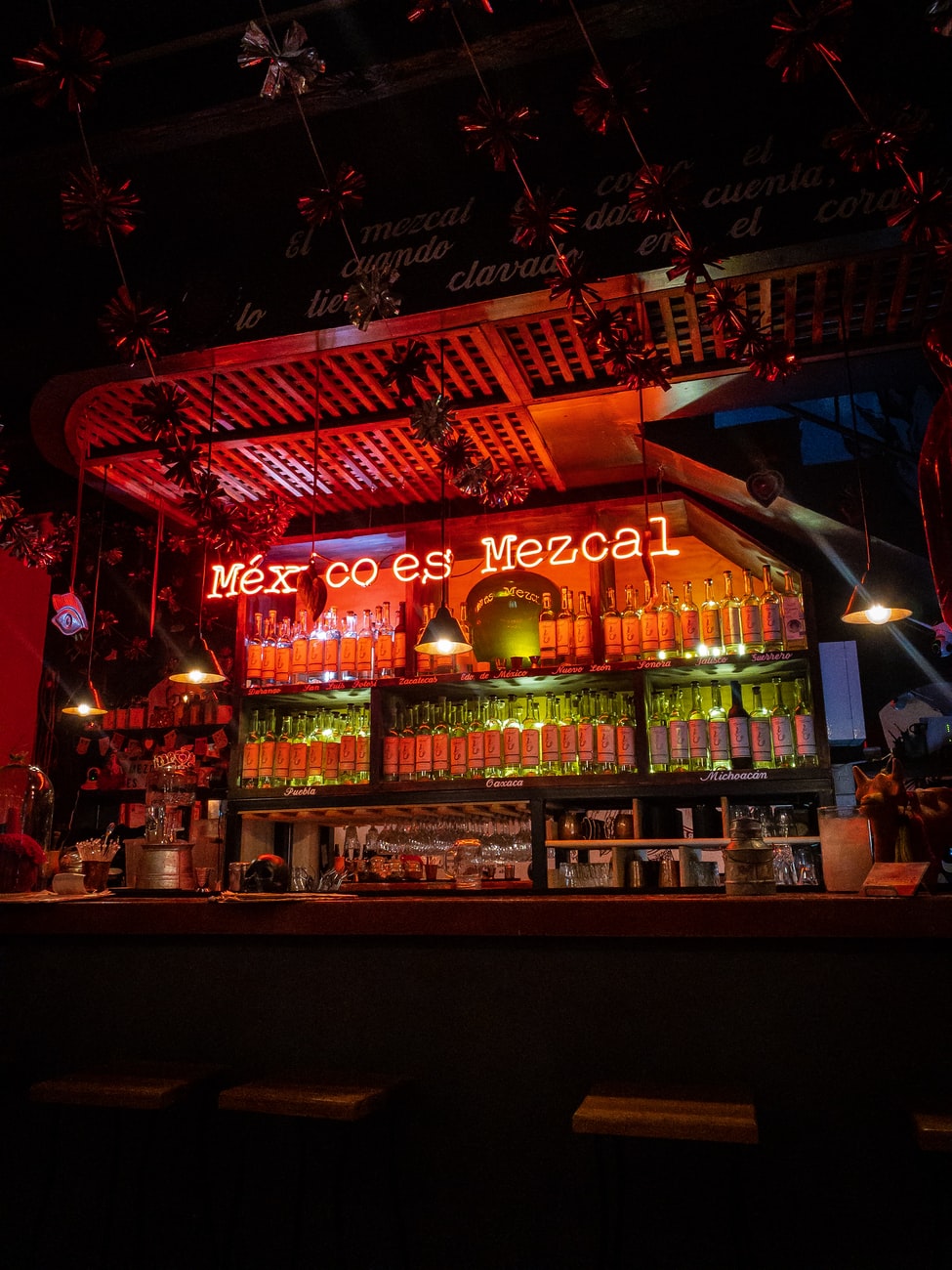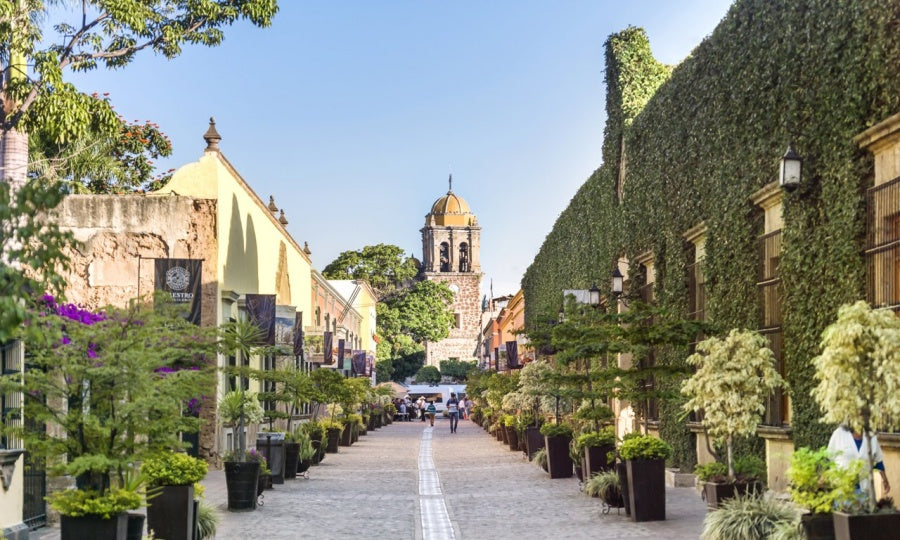
Where to Find the Best Mezcal in Mexico
Written by Paloma Quevedo on October 21, 2020
Mezcal, the smoky translucent elixir that has been distilled in Mexico for centuries, is a spirit that tastes distinctly of Mexico’s land. Mezcal is an agave spirit that, according to the Consejo Regulador Del Mezcal (CRM), can be produced in 9 sanctioned states: Durango, Guanajuato, Guerrero, Oaxaca, San Luis Potosi, Puebla, Michoacán, Tamaulipas, and Zacatecas). Mezcal can be produced from dozens of agave species, making it a drink that tastes differently depending on where it is produced, due to variations in soil, climate, elevation…etc. Each region produces unique mezcals that taste distinctly of the area where they come from; this is what makes mezcal such a pure expression of Mexico’s diversity.
Here is a list of 3 states that are currently producing the most exciting variations of Mezcal.
Durango
Although people in Durango have been making mezcal for generations, it was added very recently (2018) to the list of certified agave growing areas by the CRM. Since 2018, Durango has quickly made a name for itself in the world of mezcal. Despite Oaxaca’s domination of the mezcal industry, Durango has a lot of hard-working and passionate mezcaleros that are showcasing their techniques and natural resources through their unique mezcal.
In the past, Durango has been the setting for many classic Western movies; the rocky terrain and scattered forests play an important role in the taste of Durango’s mezcal. The abundance of volcanic rock and forest wood is used to make the hornos (ovens) in which the agave plant is roasted. The volcanic rock and wood distribute heat in such a way that gives Durango’s mezcal its distinct earthy flavor. Another element that is the signature of Durango’s mezcal is the Cenizo agave that grows wild throughout the state. The Cenizo gives the mezcal a sweet flavor that perfectly balances between fruity and earthy.
If you’re ever in Durango and want to try their specialty mezcal for yourself, visit the Lagrima de Dolores distillery that doubles as a beautiful hacienda. They cultivate Cenizo agave on the hacienda’s property and use it for their mezcal. The Lagrimas de Dolores brand utilizes Durango’s mezcalero techniques and pride themselves in exporting a variety of indigenous Durango expressions. The Gutierrez family owns the brand and are focused on celebrating Durango’s underrated mezcal traditions.
Michoacán
Michoacán has a mezcal tradition that dates back at least 400 years—in fact, there are theories that suggest Michoacán, not Oaxaca, is the true birthplace of mezcal (LINK). Like Durango, Michoacán’s battle for official access to mezcal production was long and difficult. It wasn’t until 2012 (after 400 years of producing mezcal), that the CRM finally recognized Michoacán as a mezcal producer; this certification paved the way for Michoacán’s mezcaleros to become the second largest producers of mezcal in 2020.
Michoacán mezcal is made from 5 types of agave—the main one being maguey Cupreata. The agave from Michoacán grows in abundance under the extensive pine forests that cover the state. Mezcaleros in Michoacán pride themselves in their distinct agave burning technique that includes copper pots that are made exclusively in the small town of Santa Clara, Michoacán. The ancient technique gives Michoacán’s mezcal a strong smoky finish, while the Cupreata agave gives it a distinctly floral taste that is almost juice-like.
To try a classic Michoacán mezcal, Don Mateo Mezcal is your safest bet. If you’re in the area, visit the family owned distillery that is run by maestro mezcalero, Jose Emilio Vieyra, who has kept his family tradition alive. The distillery is named after Jose’s great-grandfather, Don Mateo de la Sierra. 80% of their mezcal is made from wild agave, the other 20% is made from the maguey that grows on the rolling hills of their property. Don Mateo Mezcal is known especially for its strong citrus notes and herbaceous but floral underbelly.
Oaxaca
Now, you can’t talk about Mezcal without talking about Oaxaca. Although 9 other states are certified Mezcal producers, Oaxaca still produces 80% of the world’s mezcal.
Oaxaca has a big advantage in the mezcal game; when compared to the other states that produce mezcal, Oaxaca is the most biodiverse—38 species of agave grow within the state. Oaxaca mezcaleros have a lot of agave options, this is why Oaxacan mezcals are ensembles which means they are mezcals that are made of two or more agave variations.
Oaxacan mezcaleros employ a wide range of different techniques when producing their mezcal, techniques ranging from modern machinery to ancestral practices, from industrial machines to clay pots, this is why Oaxaca is the best place to plunge into the depths and diversity of mezcal.
To sample the best of Oaxacan Mezcal, visit Mezcaloteca in Oaxaca city. This swanky tasting room offers an expansive variety of every type of mezcal you can imagine, from indigenous growers to well-known brands. The bartenders are incredibly well versed in the culture of Mezcal and you will leave with a better perspective and accurate knowledge on all things mezcal. Mezcaloteca offers curated tastings for mezcal beginners, as well as more elevated tastings for the mezcal connoisseurs looking to explore.



